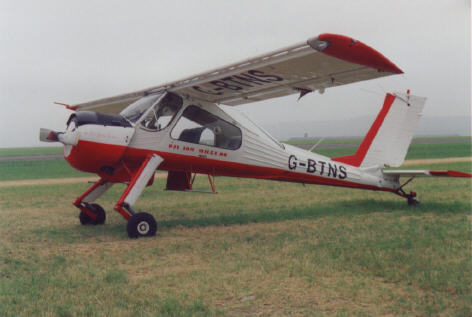Warszawa-Okecie PZL-104 Wilga
GENERAL DESCRIPTION
A four seat multipurpose aircraft of STOL class which may be widely used as:
- An executive A/c
- Air club general use, parachuting, glider and banner towing and training A/c
- Air ambulance
- Patrol A/c
- Agricultural A/c
It may be equipped with:
- FLIR
- Pollution detectors
- Retransmission equipment and small arms.
“Wilga” may be supplied with wheels, skies and/or floats. It conforms with FAR 23 & is certified by EASA.
TECHNICAL DATA
Dimensions:
Span – 11,28 m
Length – 8,46 m
Wing area – 15,5 m2
Doors dimensions – 1,63 x 0,95 m
Weights:
Take-off weight – 1300 kg
Empty weight – 1000 kg
Performance:
Stalling speed – 66 km/h
Rate of climb – 4,6 m/s
Max. range – 620 km at cruise speed 142 km/h
Take-off / Landing run – 80/95 m
Check list document in word (edit possible) and in PDF format
Background
A Polish designed and built aircraft, the original Wilga (‘Thrush’) was first flown on April 24, 1962. Intended to replace the general purpose Yak-12, (YAK-12 finished production in 1960) the design was revised in 1967 to use a 260hp PZL Ivchenko Al-14RA nine cylinder radial in place of the original 180hp Narkiewicz WN-6 flat-6 engine. The first flight with the new power plant took place on July 28. At the same time the cabin and undercarriage was improved. Full width slats, slotted flaps and drooping ailerons provide for very good STOL performance. This is the standard Wilga 35. A 230hp Continental O-470-K version, the Wilga 32 flew on September 12, 1967. A version of the Wilga 35, modified to meet US certification standards was flown on May 30,1989, and is known as the Wilga 80. The same year a redesigned 6 seat version to be known as the Wilga 88 appeared. This has subsequently been designated as the PZL-105 Flamingo. A 360hp version of the Wilga powered by the M-14P radial appeared in 1990.
The aircraft has been used by the Polish airforce in a reconnaissance and utility role, and has also found favor in private use around the World. The aircraft has been operated in glider and banner towing, agricultural (35R, 80R), observation, parachute and air ambulance roles (35P, 80P). The aircraft can be operated on floats and skis (35H, 80H). The tow hook, parachute step, and ski operating gear are fitted as standard on this six-seater. The Wilga 32 aircraft has also been license built in Indonesia where it is known as the Gelatik (Rice bird).
The aircraft is certified in the normal category and is recognized by EASA therefore a Certificate of Airworthiness in any European country is a simple formality.

